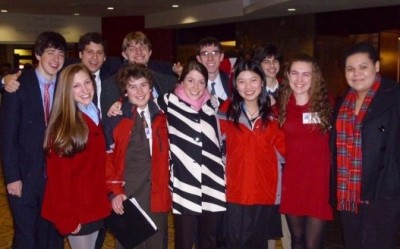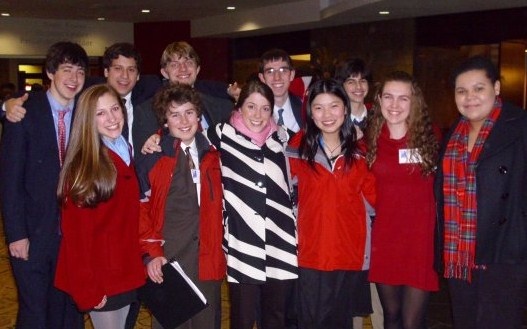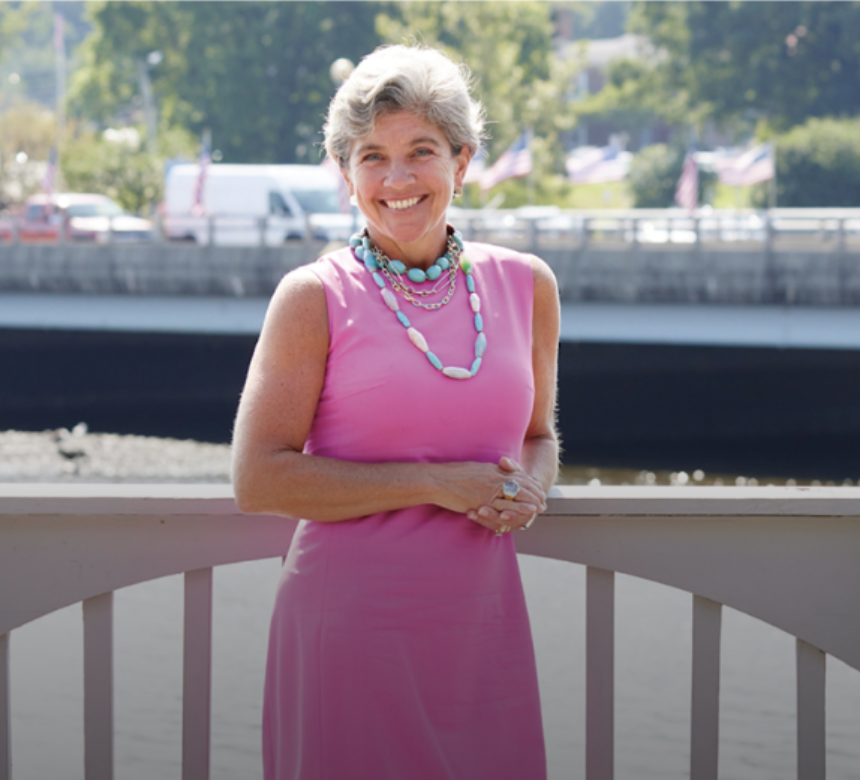
Each year the Junior State of America (JSA) club visits Washington, D.C. for “Winter Congress,” a gathering of high school students in a mock Congress convention. Normally, they are greeted with balmier than Westport weather.But instead of a short respite from arctic temperatures, the 40 students on the club’s most recent trip in early February were met with two feet of snow and blizzard-like conditions.
Nevertheless, according to K-12 social studies Chair and JSA club advisor James D’Amico, apart from “messy roads” and “frantic” D.C. residents, the convention and JSA members were unfazed.
“Everyone arrived on Friday,” D’Amico said. “They got a chance to see and talk to Sandra Day O’Connor [the former Supreme Court justice]. Everyone got to listen to O’Connor in the Supreme Court hall.”
For many this was an inside look at government; Scott Grundei ’10, the president of JSA, loved being so close.
“The trip to see Sandra Day O’Connor was incredible,” he said. “The Supreme Court, unlike Congress or the presidency, doesn’t have an auditorium to do things like this in–they actually use the Supreme Court chamber for it.”
Grundei also remarked about how “amazing” it was to see Justice O’Connor, who didn’t tolerate “people asking stupid questions, or making speeches phrased as questions.”
After seeing the hall, students went to the convention and were assigned to various committees. Students from different chapters across the country submitted bills, came up with proposals, and designated sponsors.
“The whole thing is like a constitutional simulation on steroids,” D’Amico said.
Each committee then heard bills in the mock-House and mock-Senate. Bills that were approved were put together in a package and sent to the real Congress, just blocks away.
And even amidst a storm deemed “Snowmageddon” by news reporters and students alike, keynote speaker Mike McCurry, the former press secretary to Bill Clinton, was able to speak on the opening night of the convention.
For Grundei, hearing McCurry, who handled press requests during the Monica Lewinsky scandal, was “fascinating.”
Thankfully for students, “Winter Congress” was held its normal three days, longer than the spring and fall JSA state conventions.
Stephanie Ostroff ’11, the director of activism for JSA, helped plan the trip to Washington months in advance and also believes it was a success.
“In terms of the chapter, I can only hope that we will be able to send the same if not more amount of enthusiastic students from Staples as we did this year,” she said. “Everyone loved the trip and came back Monday morning speaking so highly of the weekend.”
For the JSA, “Winter Congress” is more than a convention.
“Kids love being able to explore DC on the Friday they arrive as it gives them a chance to sight-see the Capitol,” Ostroff said.
The convention dances, she added, were also a favorite of students, an opportunity to see old friends and take a break from the legislation.
But for Grundei, the dances paled in comparison to the time with his peers.
“As for the best part of winter congress, I can say unequivocally that it is the opportunity to spend three days with a group of driven, intelligent and interesting people,” he said.
Compared to other conventions, the D.C. convention is also the largest and longest. Over 600 students attended the 2010 convention.
To compensate for the wintry weather, the convention was shortened four hours, so Staples JSA students left early on the train to return home sooner.
With two feet of snow on the ground, D’Amico hoped the JSA could evade train delays and cancellations.
Luckily, D’Amico and the JSA succeeded, returning by 7 p.m., much earlier than some student predictions of 4 a.m.














































